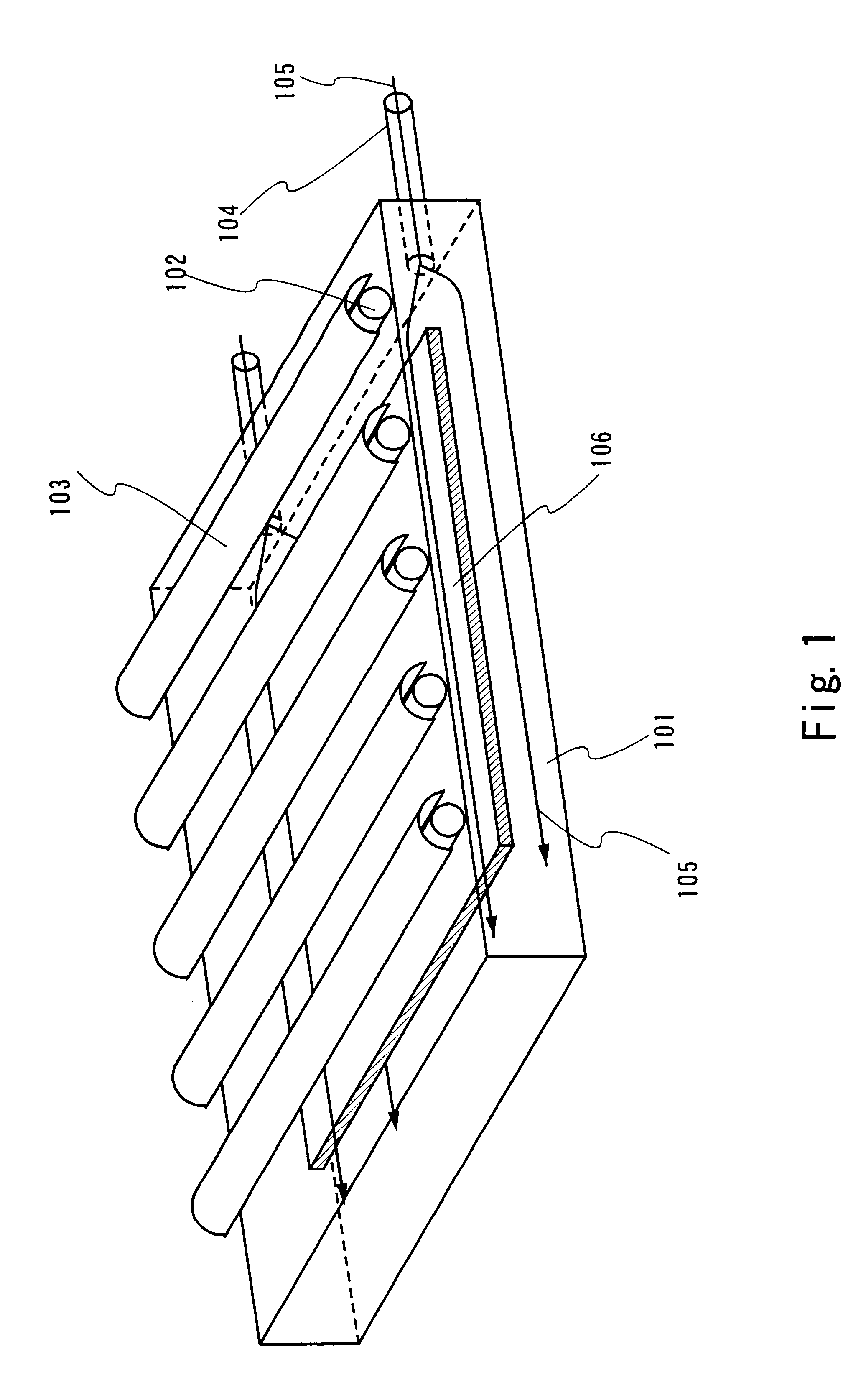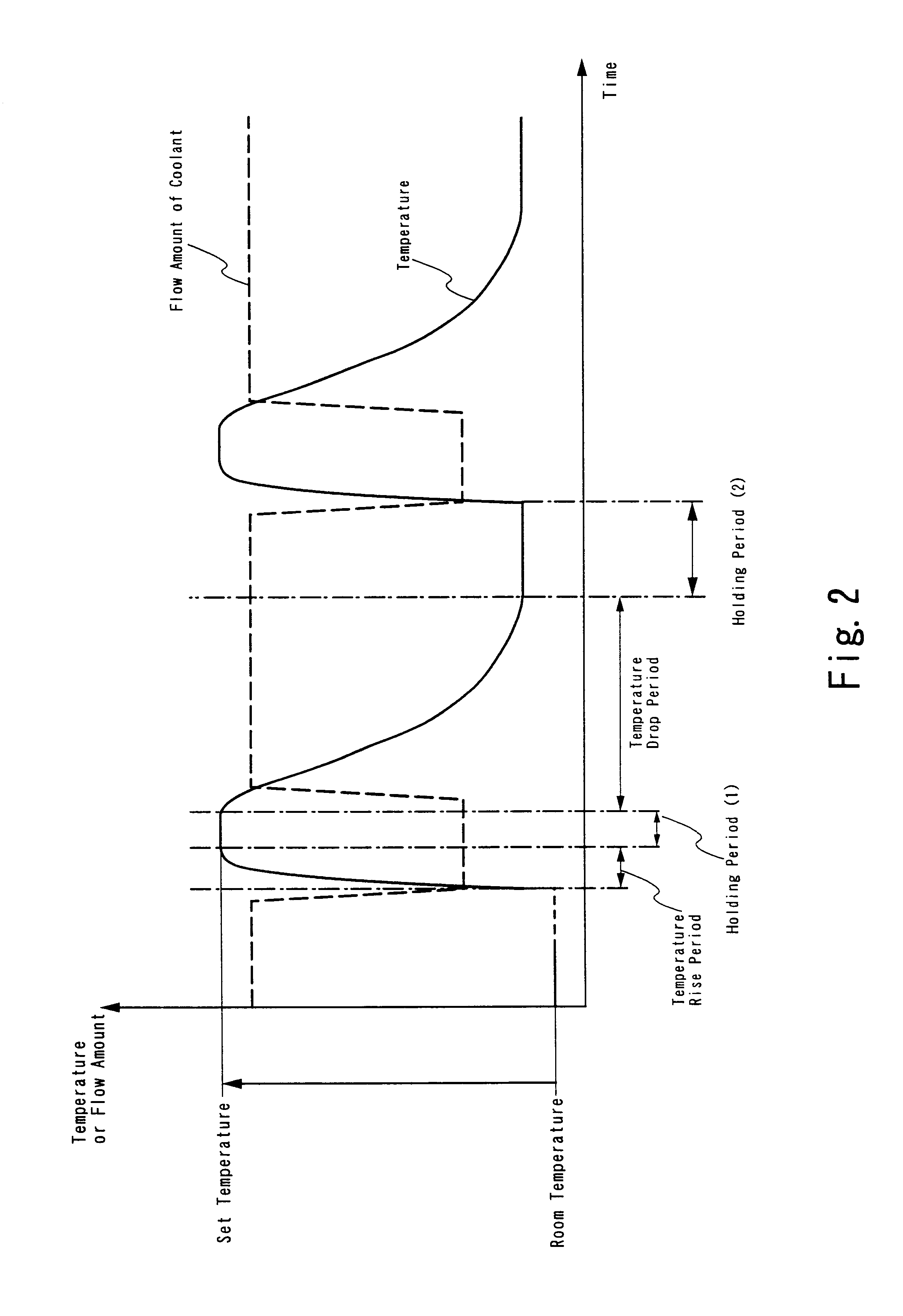Semiconductor device manufacturing method, heat treatment apparatus, and heat treatment method
a technology of semiconductor devices and manufacturing methods, applied in semiconductor devices, electrical devices, transistors, etc., can solve the problems of difficult laser annealing in a mass production process, unsatisfactory controllability and reproducibility, and reduced activation efficiency
- Summary
- Abstract
- Description
- Claims
- Application Information
AI Technical Summary
Benefits of technology
Problems solved by technology
Method used
Image
Examples
embodiment 1
FIG. 5 shows the structure of a single wafer type heat treatment apparatus as an example of a heat treatment apparatus of the present invention. A processing chamber 301 is formed of quartz and is surrounded by water-cool type cooling means 305. A lamp light source 302 has a reflective plate 303 so that pulsative radiation diffuses over a treatment object 317 efficiently. When a rod-like halogen lamp is used, a plurality of lamps are set as shown in FIG. 5 to irradiate the treatment object 317 with pulsative radiation of uniform intensity. Radiation (including a wavelength of 0.5 .mu.m to 3 .mu.m, for example) is made to pulsate by a light source control unit 304.
Nitrogen gas is supplied as a coolant to the processing chamber 301 from a coolant supply source 306. The amount of nitrogen gas to be supplied to the processing chamber 301 can be controlled by flow rate controlling means 307. The coolant supplied to the processing chamber is then discharged from an outlet 311 so that the ...
embodiment 2
As an example of a heat treatment apparatus of the present invention, the structure of an inline type heat treatment apparatus that corresponds to a substrate having a large area is shown in FIG. 16. A processing chamber 1301 is formed of quartz and is surrounded by water-cool type cooling means 1305. A lamp light source 1302 has a reflective plate so that an optical lens 1324 condenses light to irradiate a treatment object. A rod-like halogen lamp is used in a lamp light source 1302, and a cylindrical lens is used as the optical lens 1324, thereby being capable of irradiating the treatment object with a linear light. A lamp light source is lit and made to pulsate by a light source control unit 1304.
Nitrogen gas or helium gas is supplied as a coolant to the processing chamber 1301 from a coolant supply source 1306. The amount of nitrogen gas to be supplied to the processing chamber 1301 can be controlled by a flow rate controlling means 1307. The coolant supplied to the processing c...
embodiment 3
An example of a method of manufacturing TFTs using the present invention will be described with reference to FIGS. 7A to 7F. In FIG. 7A, a crystalline semiconductor film mainly containing silicon is formed on a light transmissive substrate 501 formed of alminoborosilicate glass or barium borosilicate glass. The crystalline semiconductor film is obtained by crystallizing an amorphous semiconductor film through laser annealing. Instead, the heat treatment apparatus described in Embodiment 1 or Embodiment 2 may be used to crystallize an amorphous semiconductor film through pulsative radiation. The crystalline semiconductor film formed has a thickness of 25 to 80 nm. To manufacture TFTs, the crystalline semiconductor film is etched and divided into films having given sizes for element separation. Thus formed are island-like semiconductor films 503 to 505. A first insulating film 502 with a thickness of 50 to 200 nm is formed between the substrate 501 and the semiconductor films. The fir...
PUM
| Property | Measurement | Unit |
|---|---|---|
| time | aaaaa | aaaaa |
| temperature | aaaaa | aaaaa |
| temperature | aaaaa | aaaaa |
Abstract
Description
Claims
Application Information
 Login to View More
Login to View More - R&D
- Intellectual Property
- Life Sciences
- Materials
- Tech Scout
- Unparalleled Data Quality
- Higher Quality Content
- 60% Fewer Hallucinations
Browse by: Latest US Patents, China's latest patents, Technical Efficacy Thesaurus, Application Domain, Technology Topic, Popular Technical Reports.
© 2025 PatSnap. All rights reserved.Legal|Privacy policy|Modern Slavery Act Transparency Statement|Sitemap|About US| Contact US: help@patsnap.com



